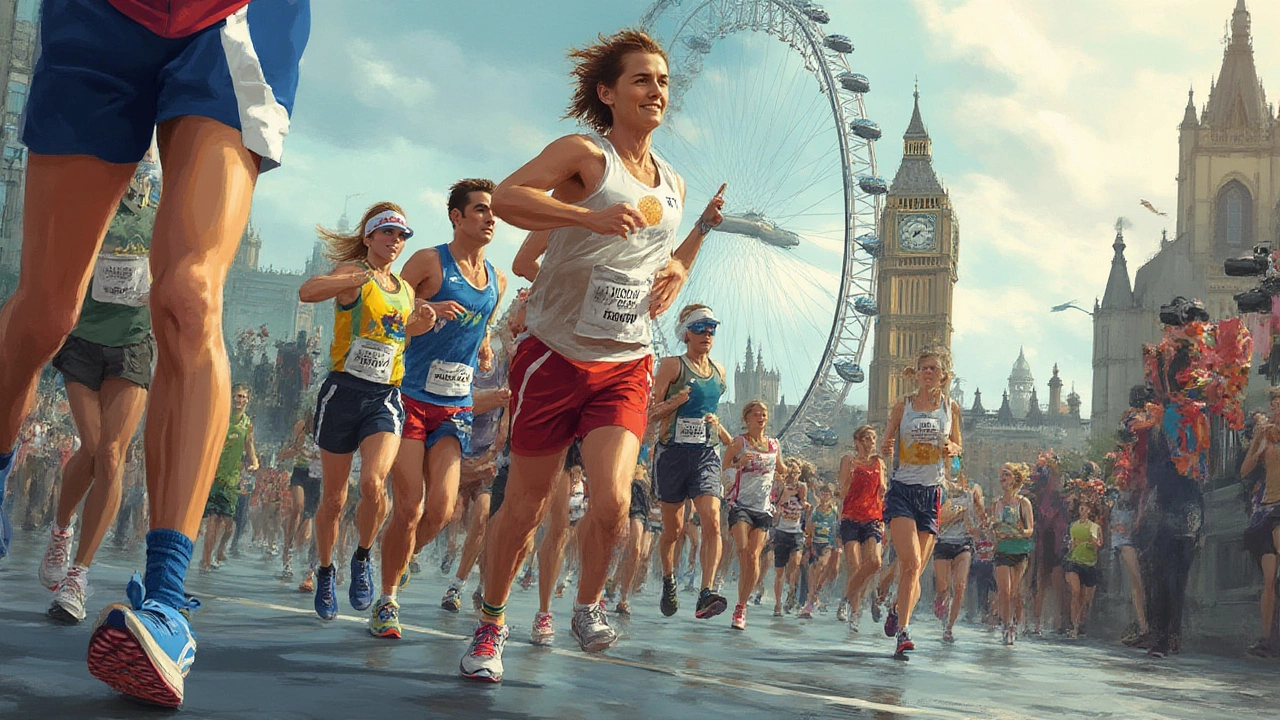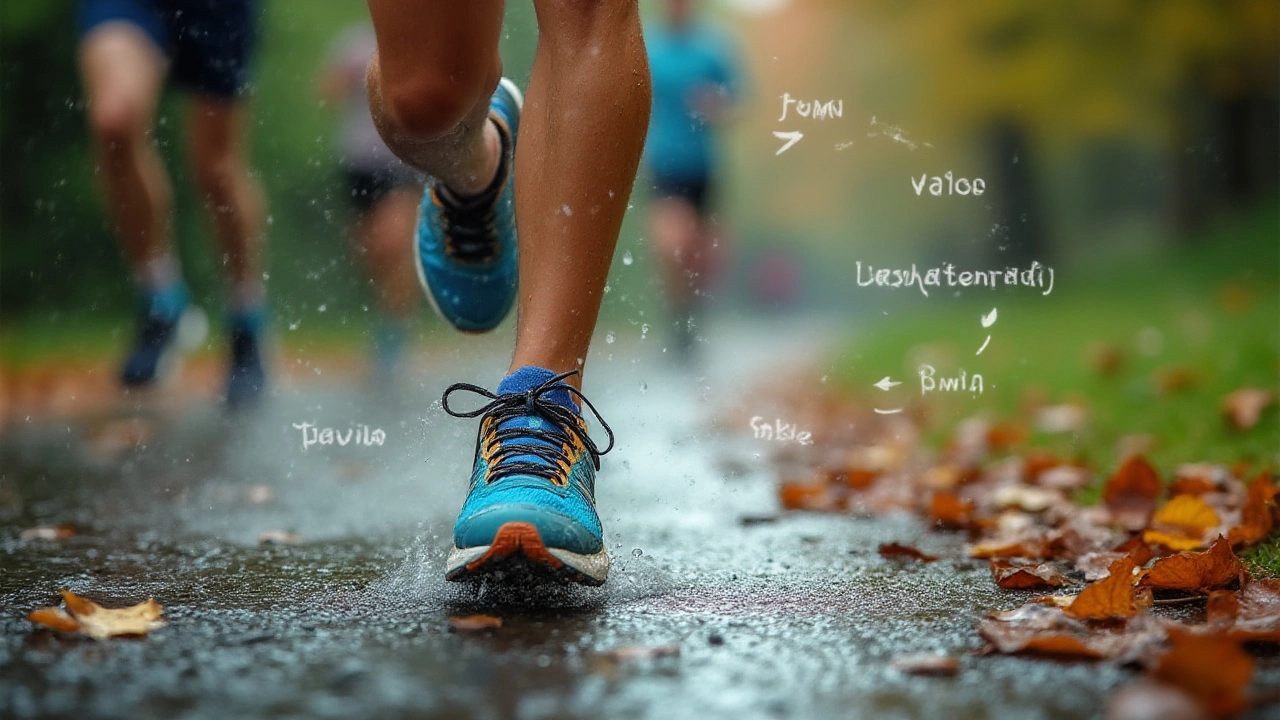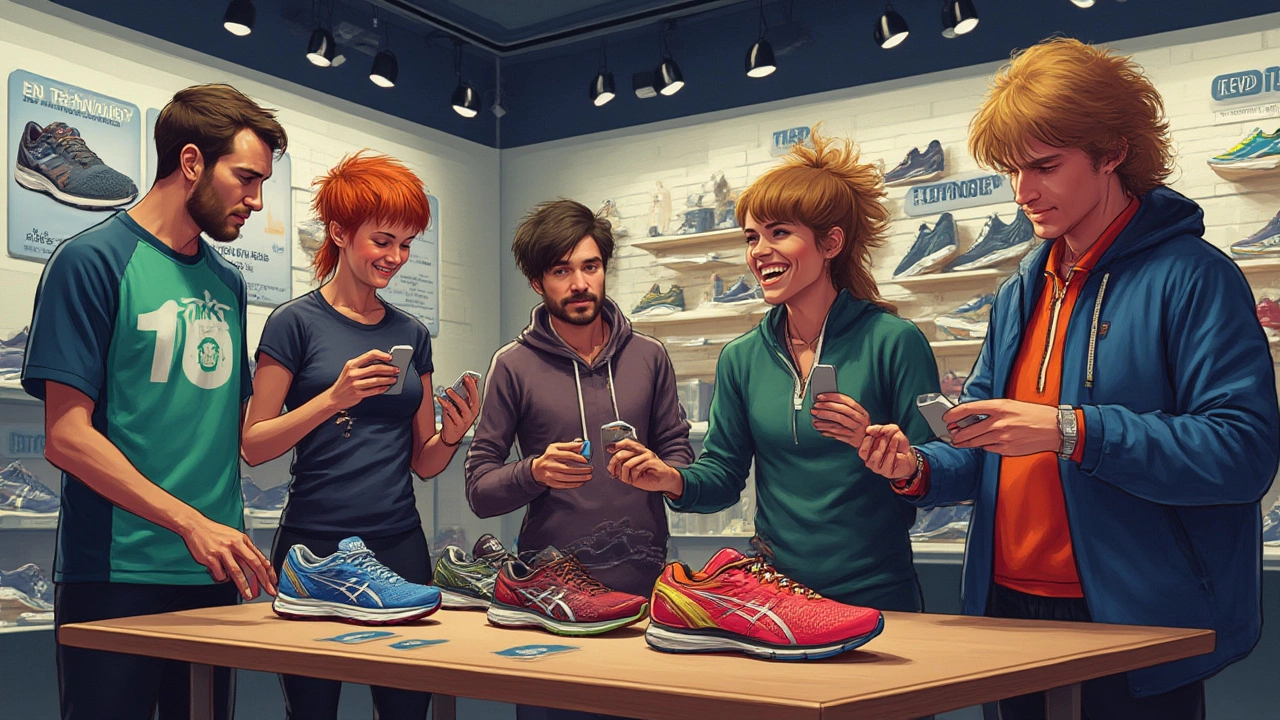Are Asics Good Running Shoes? Honest Performance Guide & Facts
 Jul, 27 2025
Jul, 27 2025
Back in 1949, a shoemaker in Kobe, Japan, started something curious with the words “Anima Sana In Corpore Sano.” You see it on every Asics logo, but most runners don’t know it’s Latin for “a sound mind in a sound body.” Fast forward to today and you’ll find Asics shoes on every other track, gym, and city street—sometimes outpacing shoes that cost twice as much. But what’s behind the reputation? Why do so many coaches, athletes, and weekend joggers trust Asics for their miles? The answers aren’t just in the hype—they’re in the engineering, the numbers, and some surprising facts that make you look twice next time you lace up.
What Makes Asics Running Shoes Stand Out?
Step into an Asics store and you’ll see a rainbow wall of options, from the classic Gel-Kayano to the quirky Novablast. Unlike brands that slap a name on a foam sole and call it innovation, Asics has a real thing for research—they even run their own Institute of Sport Science in Kobe. In fact, Asics was one of the first to use gel technology for shock absorption (first popping up in 1986), and if you jump into a pair of Kayano 31s or Nimbus 26s, you’re actually slipping into decades of tweaks, field tests, and lab analysis. This is not just marketing fluff. Take the Gel-Cumulus, one of Asics’ bestselling everyday trainers—according to a 2024 report by Runner’s World, it consistently lands among the top three for comfort and injury prevention, especially for folks racking up over 25 kilometers a week. That’s the sort of specific, repeatable praise you rarely see with trend-driven brands.
Here’s a hot tip: If you’re deciding between neutral and stability shoes, Asics actually has a unique fit guide—it’s not just about arch height. For example, the GT-2000 line uses dual-density foam and a firm medial post to gently “nudge” your stride without feeling like a medical device. Brands like Nike and Brooks are great, but Asics stability just feels subtle—almost invisible—until you realize your knees hurt less and your toes aren’t numb halfway through a run. That detail-level engineering is why you’ll still see older runners and marathoners swearing by the Gel-Kayano, a model that’s been fine-tuned through 31 generations and millions of logged miles.
But it’s not just old-school foam and gel. Since around 2021, Asics has doubled down on sustainability—the Novablast 4 uses at least 30% recycled polyester in its upper, and the Blast platform is among the lightest in its class, even though it doesn’t try to outdo carbon plate racers. A quick table helps break down how Asics stacks up against some of the top running shoe features:
| Model | Year Launched | Weight (M/US 9) | Stack Height (Heel) | Drop (mm) | Main Cushion Tech | Sustainability Features |
|---|---|---|---|---|---|---|
| Gel-Kayano 31 | 2024 | 299g | 40mm | 10 | PureGEL, FF Blast Plus | Recycled upper, bio-based dyes |
| Nimbus 26 | 2023 | 291g | 41.5mm | 8 | FF Blast Plus Eco | 75% recycled upper |
| Novablast 4 | 2024 | 255g | 41.5mm | 8 | FF Blast Plus Eco | 30% recycled upper |
| GT-2000 13 | 2023 | 274g | 36mm | 8 | FF Blast Plus, Medial Foam | Recycled upper mesh |
Is all this tech actually noticeable? If you join any parkrun or marathon forum, you’ll spot recurring themes: runners praise Asics for consistent sizing (rare, trust me), long-lasting soles, and a “forgiving” ride for both rookies and seasoned ultra runners. They’re not the flashiest on social media, but Asics shoes last. One 2023 survey by Strava put average Asics mileage before major wear at over 500 kilometers—that’s 20% higher than some big-name competitors. So, if you stretch your budget, you get a shoe that outlasts its peers by a solid margin. No small thing in a world where shoes are tossed after a few muddy jogs.

Performance for Different Runners and Terrains
Everyone wants the “perfect” running shoe, but what works for a 60 kg half-marathoner won’t work for a 100 kg rugby player using running for cross-training. That’s why Asics has such a sprawling lineup—it’s got options for road, trail, track, and even for those logging recovery walks more than sprints. The tricky part is knowing where each Asics model shines, and where it doesn’t.
For straight-up road running, the Asics Gel-Nimbus and Gel-Cumulus lines are favorites because they don’t just cushion; they adapt. Nimbus models use softer foam and extra gel under the heel for heavier strikers, while Cumulus feels lighter and a bit snappier for runners who like to pick up the pace. In the speed game, Asics jumped into the “super shoe” market with the MetaSpeed Sky and MetaSpeed Edge series—carbon-plated, featherweight, and designed to take on Nike’s Vaporfly at major marathons. In 2023, Kelvin Kiptum trained in MetaSpeed Sky before his historic London Marathon win. These aren’t casual shoes—they’re for chasing PRs and finishing lines, and they prove that Asics can do cutting-edge performance, not just daily training comforts.
Trail folks aren’t left out, either. The Asics Trabuco line has a cult following among trail runners in Europe and the US, mainly because it combines grippy outsoles with firmer cushioning, so you don’t feel every rock or root. And for wet conditions, the Fuji Lite 4 received high marks last year thanks to its drainage and lightweight build. Fun fact: In the 2023 UTMB (Ultra-Trail du Mont-Blanc), 7% of finishers wore Asics trail shoes—pretty wild, considering the tough competition from Salomon and Hoka, brands that usually dominate dirt. For high school or college track, spikes like the Asics Hyper MD 8 are go-tos for mid-distance athletes, blending speed with a more forgiving fit than many minimalist spikes.
If you’ve ever had issues with plantar fasciitis or runner’s knee, Asics stability series (like GT-2000, Kayano, and GT-1000) is highly recommended by both sports podiatrists and regular orthopedists. There’s even a 2022 clinical trial from the University of Sydney showing that Kayano wearers saw reduced injury risk in runners with mild overpronation compared to a control group in neutral shoes. That’s the sort of targeted data you want when shopping for help, not just hype.
But here’s an insider tip: don’t overlook the “fit feel.” Asics is famous for its slightly snug but secure toe box, and its shoes tend to run true to size, but some, like Nimbus, can feel roomy while Kayano is a bit more structured. Always try first, if possible—or buy from a retailer with a solid return policy. And don’t assume the most expensive Asics model is always the best. Some everyday trainers, like the Gel-Pulse series, quietly rack up praise for comfort, despite costing half as much as “flagship” designs.

Tips for Picking the Best Asics Running Shoes for Your Needs
The sheer wall of options can make picking your first—or next—pair of Asics feel overwhelming. But it really boils down to a few key factors that make a difference between a shoe you’ll grab every morning and one that collects dust in your closet.
- Know your foot type and stride: Asics divides shoes into neutral, stability, and motion control types. If your foot rolls inward (overpronates), aim for Kayano or GT-2000. If you land flat, Cumulus or Nimbus are safe bets.
- Consider usage: Daily miles? Go for Gel-Nimbus or Cumulus. Racing? Try MetaSpeed Sky or Noosa Tri. Trail running? Seek out Trabuco or Fuji Lite.
- Size and width: Unlike some brands, Asics offers wide and extra wide fits for most top models—super useful if you’ve got “problem” feet or bunions.
- Replace regularly: Even a tough-as-nails Asics should retire after 500-800 km (around 300-500 miles). Grip, bounce, and support decline gradually, and so does your protection against injury.
- Watch for deals on older models: Asics refreshes most lines yearly, but last season’s shoes are usually 30% off with almost no tech difference for everyday runners.
- Climate matters: For humid or hot places, look for shoes with engineered mesh uppers (Nimbus and Novablast breathe better than Kayano).
- Don’t trust just the looks: A flashy colorway or thick midsole doesn’t always signal better tech. Read specs and try them on—Asics sometimes sneaks major updates under the radar.
One of the quiet benefits is the Asics “try and run” policy—in some markets, you can wear the shoe for a month and, if you don’t like it, return it. That’s the closest you get to a no-risk upgrade for your feet. If you’re still undecided, visit a specialty running shop. Many have gait analysis tools and stock plenty of Asics, so you can test stride and comfort in real time. There’s a reason seasoned marathoners often stick with the same model for years: when you find an Asics that suits you, it just works, and lets you clock up the miles with less fuss than any shoe should.
So, are Asics good running shoes? The numbers, technology, thoughtful design, and sheer loyalty from the running world all say yes—and not just a little bit. Whether you’re training for your big city debut, plodding local park paths, or just want all-day comfort, Asics has a shoe that’s probably been tested in just about every way you can imagine. Don’t buy them for the name—get them because your feet (and knees, and back) will notice the difference.